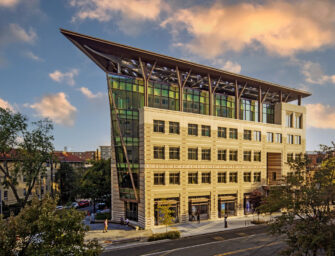Brethren in Space: Two Geoscientists Aboard the International Space Station
 By Michael Mischna, Secretary of the Planetary Sciences section and Deputy Chief Scientist of Solar System Exploration Directorate at JPL
By Michael Mischna, Secretary of the Planetary Sciences section and Deputy Chief Scientist of Solar System Exploration Directorate at JPL
Science and discovery are, fundamentally, social activities. They have the greatest impact when conducted in the open with a free exchange of ideas. Even discoveries made in seclusion still need to be shared with the world. Archemides’ buoyant discovery in the privacy of his bathtub may have been the “Eureka” moment, but it required exposure to the public before it impact could be felt. Today, given the ease by which we can communicate around the world, it’s increasingly uncommon to see any sort of research that is conducted purely in isolation. In the February 2018 issue of Journal of Geophysical Research: Planets, for example, each of the 19 research articles has an authorship of two or more (with an average of 6.3). At its best, science is a collaborative endeavor. That is why, when given the opportunity, we choose to assemble at meetings, face-to-face. Posters and PowerPoint are mere tools for facilitating dialogue between people. Collaborative science is invariably more than the sum of its parts. Ideas that are developed between two or more scientists, coming from different backgrounds and with different interests, usually lead to new avenues of research and discovery. Anyone who has participated in an AGU Fall Meeting can likely attest to the creativity and inspiration that is fostered when sharing knowledge and communicating ideas in person rather than through less social means. Under the umbrella term ‘geoscience’ reside dozens of disciplines and topical areas. The breadth of knowledge one can gain from fellow geoscientists of varied stripes is what makes this field so rich and rewarding. This is why we should take note that later this spring, two geoscientists will co-inhabit the International Space Station (ISS).
This year marks the 20th anniversary of the launch of the ISS which was designed to be a unique laboratory for scientific and engineering endeavors jointly pursued by an international community of scientists, technicians and engineers. From its perch in low Earth orbit, the ISS provides an exclusive vantage point for observing the Earth and engaging in scientific study. It is against this backdrop that we are experiencing a most exciting “first”. Dr. Drew Feustel, NASA astronaut and geophysicist, arrived at the ISS this past March and, in June, he will be joined by, Dr. Alexander Gerst, an European Space Agency astronaut and volcanologist. Both are “card-carrying” geoscientists and members of the AGU. This pairing, and the creativity that it may foster, is a microcosm of our geoscience community, where collaboration, open communication and international partnership has long been the standard way of doing business.
Among the science-related activities to be undertaken on the ISS while both Drew and Alex are aboard is the installation of the Atmosphere-Space Interactions Monitor (ASIM) instrument to study the Earth’s atmosphere which will replace the now-defunct ISS-RapidScat instrument. This is just the latest in a series of geoscientific instruments dating back to the very earliest days of the ISS.
With two geoscientists on board, and reintroduction of geoscientific instrumentation aboard the space station, this expedition firmly highlights the key role of the geosciences in the operation of the ISS and, more broadly, in the overall science interests of spacefaring nations. Could we also say that there is an inspirational aspect to having two of our geoscientist brethren in space as well? Of course. Who among us hasn’t at least once dreamed of flying through space and gazing down upon Earth? Although more pedestrian concerns and pursuits leave most of our feet firmly planted on solid ground, the aspirational quality of having those who share elements of our intellectual curiosity residing on the ISS is quite meaningful. Who can predict what discussions will be had between these two comrades-in-science? Suffice it to say that both will return having gained new ideas to investigate and new perspectives on our home planet.
Editor’s Note: Best sure to check out Eos and AGU’s first off-planet submission from earlier this year, an Earth Day message from Drew Feustel, and the Eos article “Geoscientist-Rich Crew Slated for Space Station Next Year.“





There are no comments
Add yours